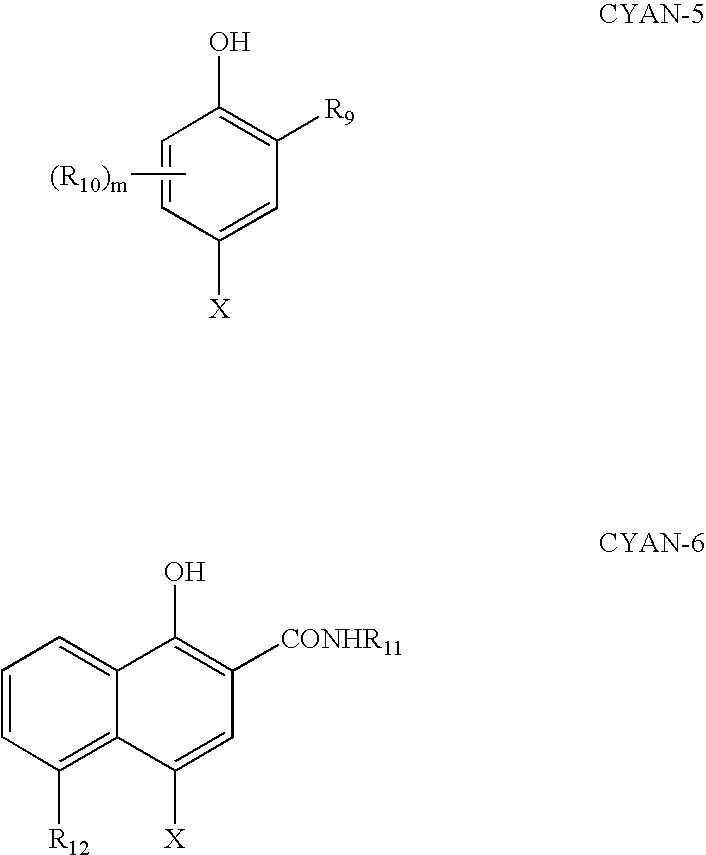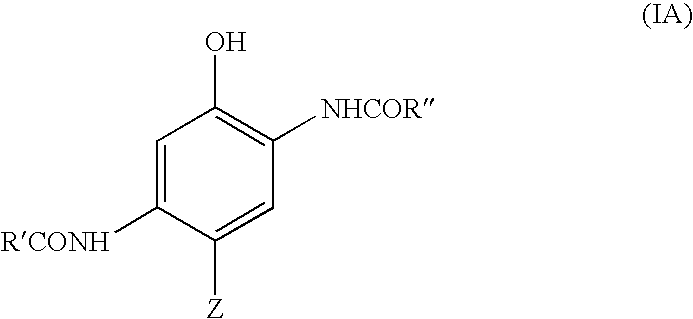Transparent invisible conductive grid
a transparent, invisible, conductive grid technology, applied in thermography, instruments, photosensitive materials, etc., can solve the problems of increased brittleness, physical defects, loss of antistatic function, etc., to reduce the coverage, reduce the cost of materials, and reduce the effect of friction control
- Summary
- Abstract
- Description
- Claims
- Application Information
AI Technical Summary
Benefits of technology
Problems solved by technology
Method used
Image
Examples
example 1
Control
In this example a continuous antistatic layer was applied to a sheet of photographic polyethylene coated paper. The antistatic layer comprised of the following ingredients:
Lithium nitrate 4.1%Carbowax ® (polyethylene glycol supplied by Union Carbide) 3.6%Ludox ® AM (colloidal silica supplied by Du Pont)18.5%Neocryl ® A50454 (styrene acrylate copolymer supplied by73.8%Avecia)
The polyethylene coated paper represents a typical photographic paper base of approximately 160 g / m2 of photo quality paper with 26 g / m2 pigmented of low density polyethylene (0.917 g / cc) on the top side. This layer contains approximately 12% by weight of anatase TiO2, an optical brightener and blue tints. On the backside was a layer of 28 g / m2 of clear high density (0.924 g / cc) polyethylene. On the backside polyethylene resin a continuous antistatic layer was coated by a gravure coating process.
In Examples 2 through 5, different dry coverages of the antistatic layer comprising the following ingredi...
example 2
In this example, polypropylene foam of caliper 6.0 mil and density 0.53 g / cm3 was obtained from Berwick Industries, Berwick, Pa. This was then extrusion resin coated on both sides using a flat sheet die. The upper flange or the face side of the foam was coextrusion coated. The layer closer to the foam was coated at 36 g / m2 coverage, at a melt temperature of 525° F., and comprised (approximately) 10% anatase TiO2, 20% Mistron® CB Talc (from Luzenac America), 20% PA609 (amorphous organic polymer from Exxon Mobil) and 50% PF611 (polypropylene homopolymer—extrusion coating grade from Basell). The layer furthest from the foam, referred to as the skin layer, was coated at 107 g / m2 coverage, at a melt temperature of 300C, and comprised (approximately) 18% TiO2, 4.5% ZnO, and 78.5% D4002 P (low density polyethylene from Eastman Chemical Company). The lower flange on the non-imaging or wire side of the foam was monoextrusion coated at 300 C melt temperature. The lower flange coating was at ...
example 3
This example was the same as example 2, but instead of coating a grid pattern on the backside, a continuous antistatic layer was applied.
PUM
| Property | Measurement | Unit |
|---|---|---|
| equivalent spherical diameter | aaaaa | aaaaa |
| diameter | aaaaa | aaaaa |
| volume fraction | aaaaa | aaaaa |
Abstract
Description
Claims
Application Information
 Login to View More
Login to View More - R&D
- Intellectual Property
- Life Sciences
- Materials
- Tech Scout
- Unparalleled Data Quality
- Higher Quality Content
- 60% Fewer Hallucinations
Browse by: Latest US Patents, China's latest patents, Technical Efficacy Thesaurus, Application Domain, Technology Topic, Popular Technical Reports.
© 2025 PatSnap. All rights reserved.Legal|Privacy policy|Modern Slavery Act Transparency Statement|Sitemap|About US| Contact US: help@patsnap.com



